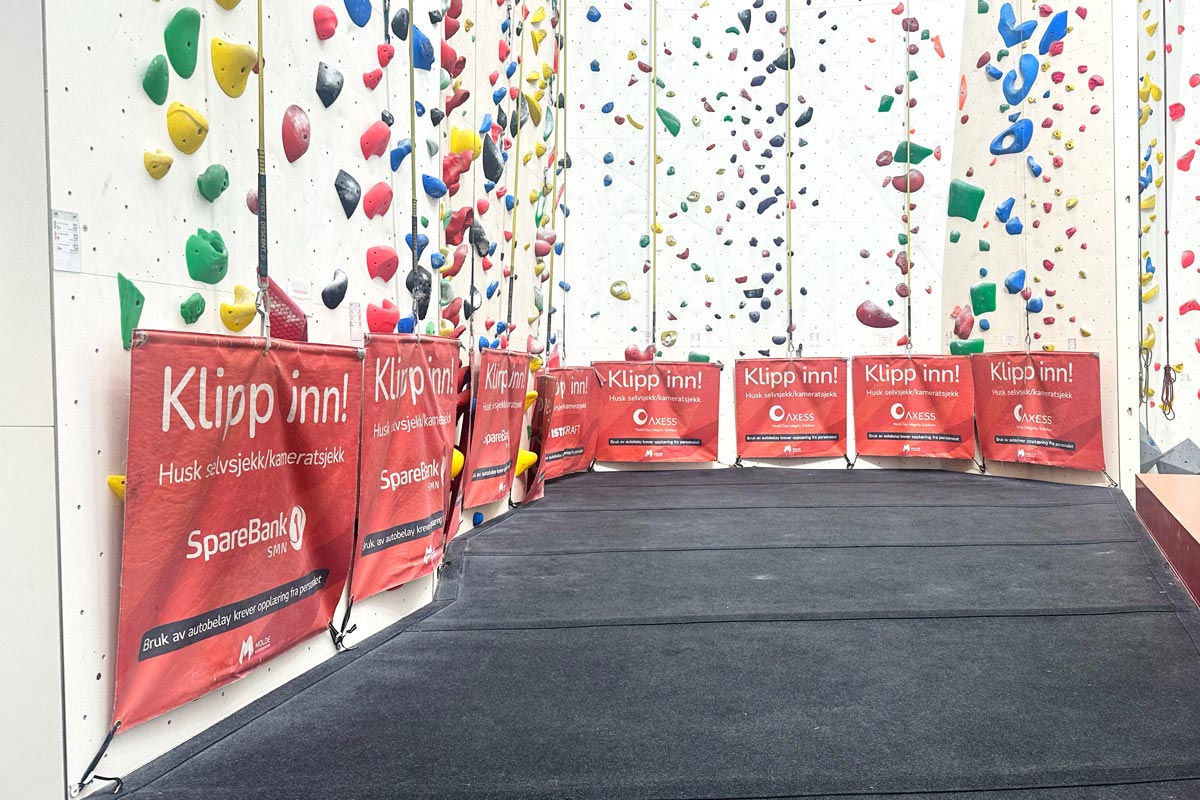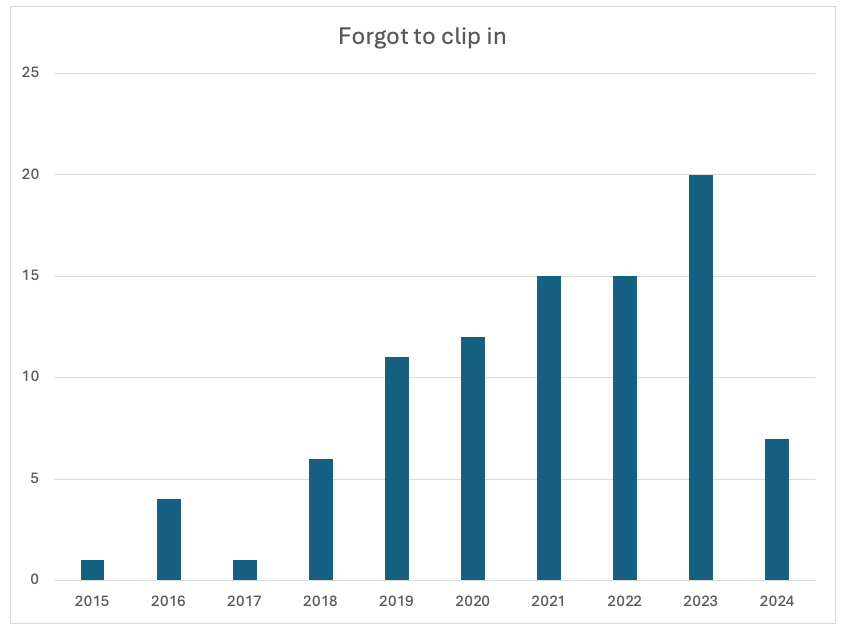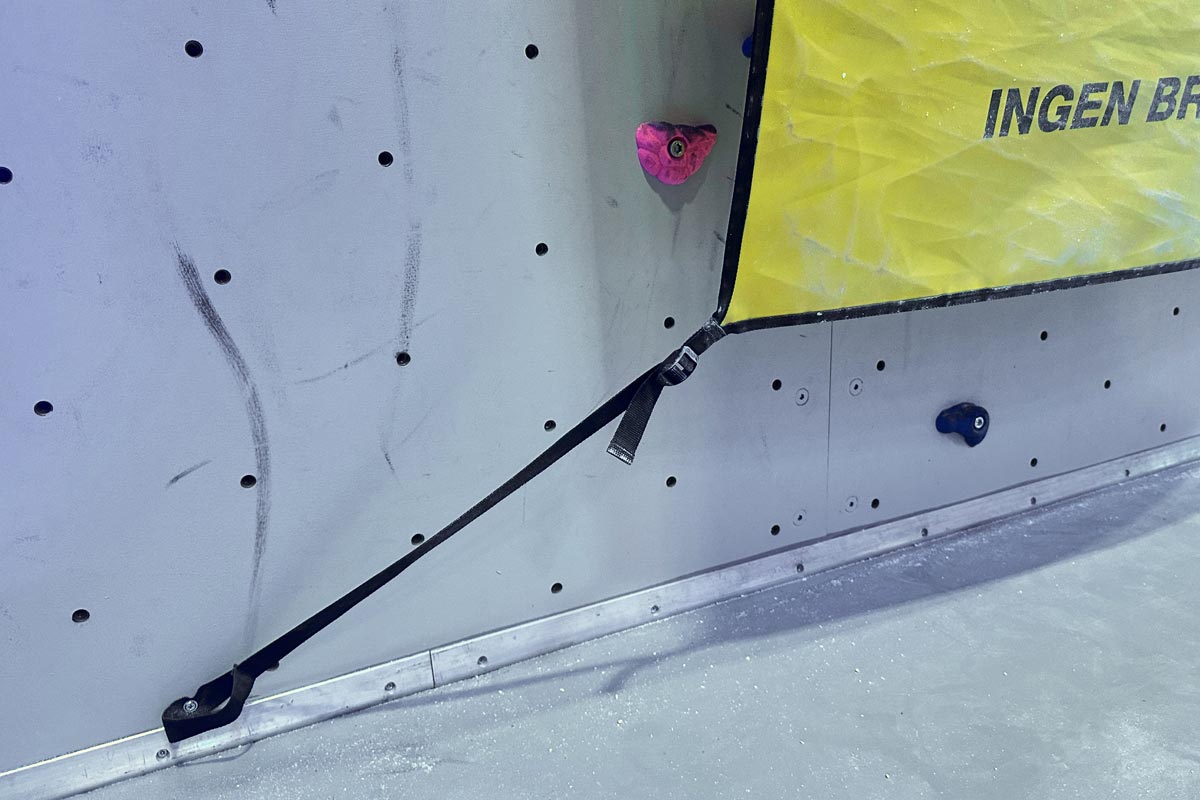How Norway dealt with an alarming wave of autobelay accidents.
Autobelays are a fairly recent addition to Norwegian climbing gyms. Their introduction was followed by a surge of accidents, many of them very serious. Fortunately, the latest accident data indicate that countermeasures are effective. The following report comes courtesy of the Safety Committee of the Norwegian Climbing Federation (NCF).
The first incident of this type in Norway was registered back in 2015, where a climber fell off a route after forgetting to clip in. He fell seven meters to the floor, sustaining complex fractures in both legs and a spinal fracture. Since then we have seen a steadily increasing number of accidents like this, with severe and complex fractures in the legs, pelvis and back. In January 2024, the most serious accident to date happened when a climber forgot to clip in and fell to the floor from 12 metres. He survived the accident but is permanently bound to a wheelchair.
In each case it is easy to point fingers at the individual climber who has forgotten the only thing that must be remembered – to clip in. Climbers are also quick to blame themselves for forgetting something so fundamental. But if we take a broader perspective, the figures indicate that we have developed and are using a system that invites us to make life-threatening mistakes. If we, every time an accident occurs, place the blame on the individual climber who has made a mistake, how can we build a healthy safety culture? If so, we would ignore our responsibility to deal with the inherent risk, and would not progress with the safety work. No climbers come to the climbing gym expecting to fall and hurt themselves. If we accept this as our starting point, we must treat mistakes made by the climbers as symptoms of a deeper problem and act accordingly. The total numbers of accident-inducing personal mistakes indicate that we are facing a system failure. Thus, we must change our approach and attitude to the problem of autobelay climbing.

The alarming increase in accident numbers led the Safety Committee of the Norwegian Climbing Federation (NCF) to discuss what could be done to prevent climbers from forgetting to clip in. A thorough examination of relevant incident reports in our database identified some common factors in the autobelay setups in climbing gyms. The data indicated that a removal of those factors could have prevented the accidents from happening. Thus, we saw the need to shift the focus from personal mistakes to the parts of the autobelay setup that provoke such mistakes.
Following the examination, the NCF published new “National Guidelines for Autobelay Climbing” on 1 March 2024. The recommendations include measures such as using rectangular belay gates instead of triangular ones, removing all possibilities of attaching the autobelay carabiner any other place than in the belay gate, setting aside completely separate wall sections for autobelay climbing, plus many more.
Many gyms, themselves highly concerned about the accident numbers, were quick to implement the guidelines and our 2024 statistics show a striking decrease in the number of climbers forgetting to clip in. Only seven such incidents were registered throughout the year, and three of those happened before the new guidelines were published. Thus, we are confident that the guidelines have had a positive effect and have contributed to reducing the number of autobelay accidents.

The NCF guidelines for autobelay climbing are translated in English and can be downloaded here. The Norwegian version can be viewed here.
—
About this Series
This article forms part of a series of case studies derived from reports submitted to national accident and near miss reporting databases which are included in the UIAA’s international directory of accident data reporting systems. For more information on the different databases, and to view, additional case studies, click here.



